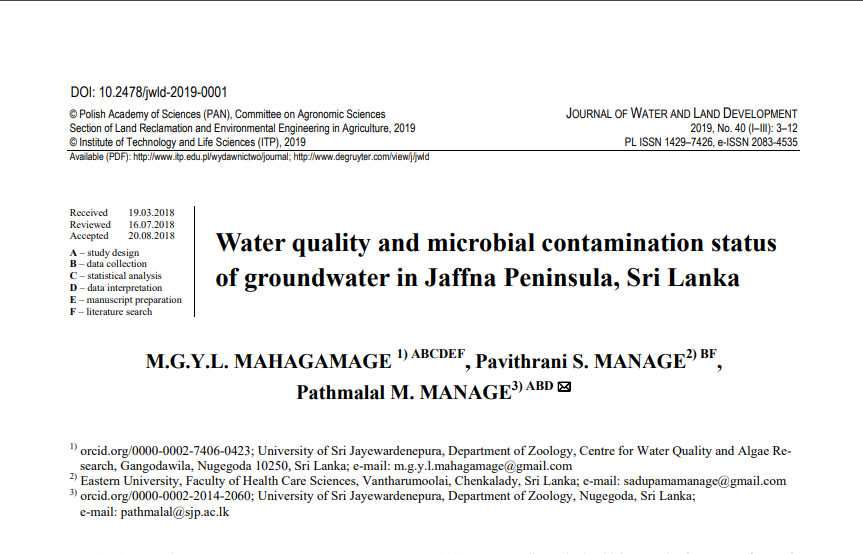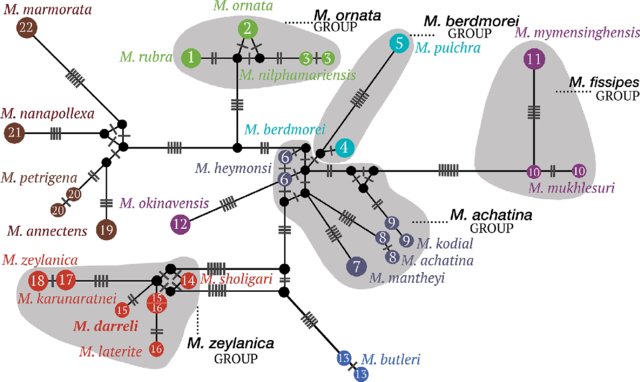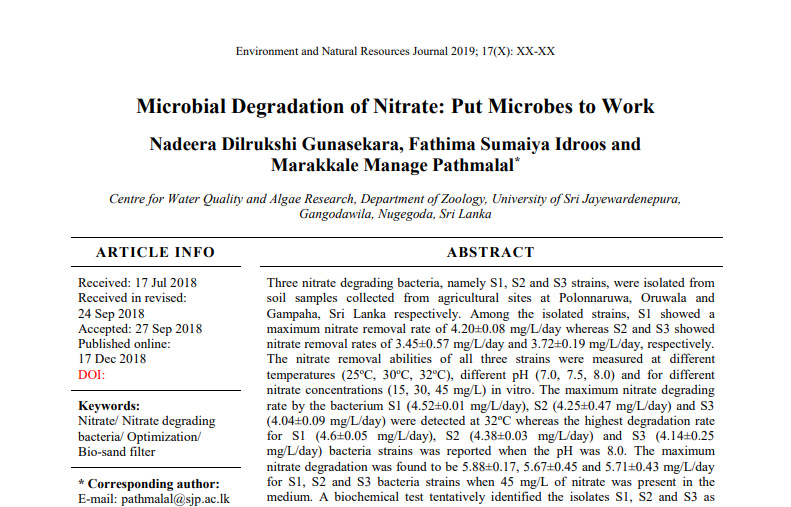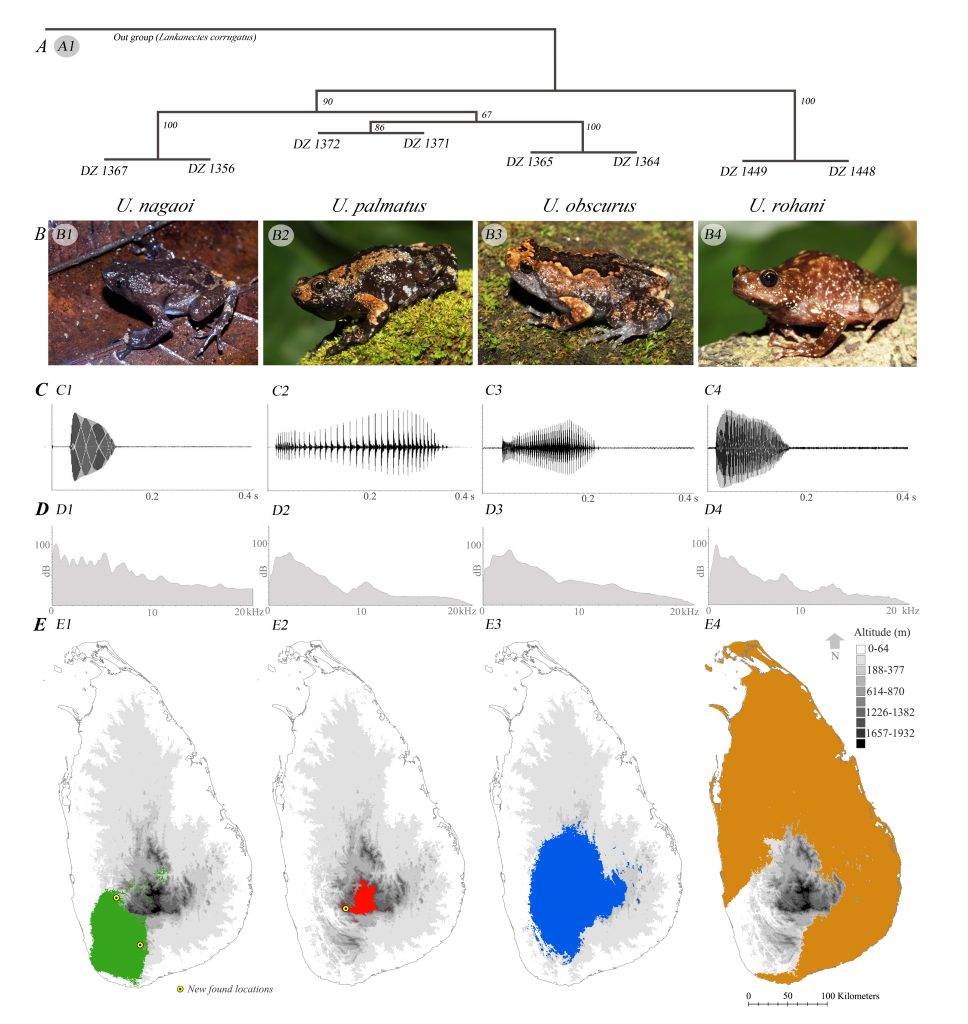Authors: M.G.Y.L. Mahagamage, Pavithrani S. Manage, Pathmalal M Manage
Journal: JOURNAL OF WATER AND LAND DEVELOPMENT
In Sri Lanka, among 2588 Salmonella positive cases, the highest incidences were recorded from Jaffna peninsula during 2005 to 2013. Therefore, the present study aimed to identify the microbiological and chemical contamination status of groundwater (40 well water) sources in Jaffna during November 2016. The total coliform, E. coli, Salmonella spp. and Shigella spp. along with some physico-chemical parameters of groundwater were studied. The results revealed that entire peninsula was contaminated with total coliform and E. coli bacteria and the parameters recorded were not within the WHO and SLS (Sri Lanka Standards) drinking water quality standards





